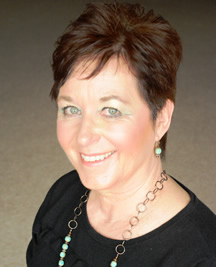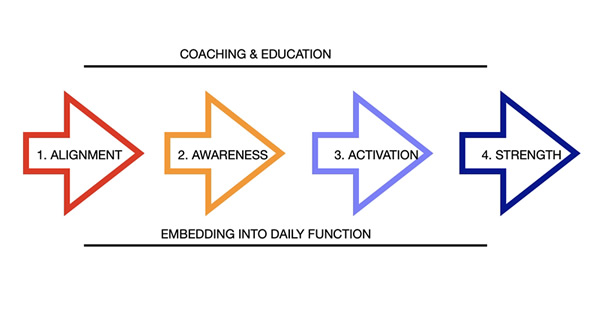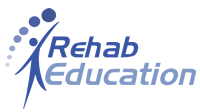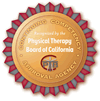A Comprehensive Guide to Treatment of Children with CP
An Innovative, Research-based Approach to Therapy
Two-day live, in-person workshop will teach you when and where to start, and how and when to progress your treatments. It’s all about “doing the right thing, at the right time, and in the right order”.
Pia Stampe, PT, DPT presents a systematic, multi-system treatment framework to help therapists build a treatment plan that creates a solid foundation for functional skills progression across the life span.
Cerebral Palsy is a complex diagnosis, which usually involves multiple body systems. Learn to organize your treatment approach with a keen eye on both the present and the future, Pia will discuss new and promising interventions that are on the horizon for treatment of cerebral palsy.
Enhance your clinical skills and confidence in treating your clients with cerebral palsy, by focusing on hands-on learning opportunities to apply this systematic framework to your own clients.
Learn more about this systematic framework for treatment of CP
You will be required to:
- attend all 14.5 hours of this course to earn your CE credits.
- comply with Covid-19 policy at host site. Please review on registration page prior to registering.
Upon completion of online registration, you will be emailed a course receipt. This is NOT a course confirmation. Your course confirmation will be emailed separately. It is recommended that you wait for written course confirmation prior to booking non-refundable travel or lodging. If you have not received course confirmation 10 days prior to your live CE course, please contact Rehab Education, LLC to check on the status of your registration.
By the end of this course, participants will be able to:
- describe how to harness brain recovery and neuroplastic potential through different stages of infancy, childhood and adolescence, and relate those to traditional service delivery models.
- describe the correlation between 2 distinct periods of abundant neuroplasticity and optimal therapy service delivery for cerebral palsy.
- demonstrate an understanding of the correlation between lifelong functional capacity and strategic intervention planning for cerebral palsy across the different stages of childhood and adolescence.
- list 4 main therapeutic intervention categories, in the correct order of application, for treatment of cerebral palsy.
- demonstrate the correct, sequential assessment and intervention during live treatment sessions.
- list the 3 reasons for using novelty, sensory, auditory and visual substitution therapeutically to improve functional capacity.
- describe 3 different coaching strategies for empowering child and family participation during therapy and beyond.
- prepare a home program that embeds all recommended therapeutic interventions into the child and family’s daily life.
Day 1
7.5 hours direct instruction
| 8:00 – 8:30 | Workshop introductions/overview/house keeping |
| 8:30 – 10:00 | Human neuroplasticity and recovery potential in CP. Systematic framework for assessment and intervention |
| 10:00-10:15 | Break |
| 10:15-12:15 | Doing the right thing, in the right order, at the right time:
Alignment, Awareness, Activation for building a solid foundation. |
| 12:15-1:15 | Lunch |
| 1:15-2:15 | The impact of vision impairment specifically on motor control as well as overall development |
| 2:15-3:15 | Child and family coaching to integrate interventions into daily life. Building upon a solid foundation: What is next? |
| 3:15-3:30 | Break |
| 3:30-5:00 | Demonstration and discussion of sEMG Biofeedback, NMES and Spinal Neuromodulation as tools to use within the treatment framework.
*Based on this discussion, participants can seek specialty courses to learn techniques in detail |
Day 2
7 hours of instruction
| 8:00 – 8:30 | Questions/discussion of day 1 content |
| 8:30 – 10:00 | Assessment and Treatment Demo |
| 10:00-10:15 | Break |
| 10:15-12:15 | Participants assess and treat in groups |
| 12:15-1:15 | Lunch |
| 1:15-3:15 | Participants assess and treat in groups |
| 3:15-3:30 | Break |
| 3:30-4:30 | Discussion of participants’ treatment sessions/wrap-up |
14.5 CE Credits
This course content is not intended for use by any participants outside the scope of their license or regulation.
This live interactive webinar course is accepted by many professional credentialing organizations and state professional regulatory boards. Rules and regulations change frequently without notification, and apply differently to live and online courses. Please check with your state board to confirm accuracy of this list and acceptance of contact hours. Certificate of Attendance will be issued to all participants upon completion of the course and may be used for CEU verification of credits.
CE credits vary by state. Please check with your state board/certifying agency to confirm conversion of contact hours to CEUs.
Rehab Education, LLC is recognized as:
- AOTA approved provider of OT and OTA continuing education (#6177)
- approved provider of PT and PTA continuing education by the NY State Education Department Board of Physical Therapy.
- approved provider of PT and PTA continuing education by IDFPR/ Illinois Board of Physical Therapy (#216000227).
 American Occupational Therapy Association (AOTA): Rehab Education, LLC is an AOTA Ap-proved Provider (#6177) of professional development. This live CE course is offered at 1.45 CEU (14.5 clock hours) Intermediate level | OT Service Delivery/Foundational Knowledge. The assignment of AOTA CEUs does not imply endorsement of specific course content, prod-ucts, or clinical procedures by AOTA or indicate AOTA approval of a certification or other professional recognition. (Course must be completed prior to 3/21/2028) Approval #6734.
American Occupational Therapy Association (AOTA): Rehab Education, LLC is an AOTA Ap-proved Provider (#6177) of professional development. This live CE course is offered at 1.45 CEU (14.5 clock hours) Intermediate level | OT Service Delivery/Foundational Knowledge. The assignment of AOTA CEUs does not imply endorsement of specific course content, prod-ucts, or clinical procedures by AOTA or indicate AOTA approval of a certification or other professional recognition. (Course must be completed prior to 3/21/2028) Approval #6734.
Arkansas Physical Therapy Association: This course has been approved by the Arkansas APTA for 14.5 contact hours. Approval #APTA-AR 2020
 Physical Therapy Board of California: The Physical Therapy Board of California recognizes Rehab Education, LLC as an approval agency to approve providers offering continuing competency courses for CA licensed PTs and PTAs. This course is approved for 14.5 contact hours.
Physical Therapy Board of California: The Physical Therapy Board of California recognizes Rehab Education, LLC as an approval agency to approve providers offering continuing competency courses for CA licensed PTs and PTAs. This course is approved for 14.5 contact hours.
Illinois State Board of Physical Therapy: Approved CE Sponsor by Illinois State Board of Physical Therapy, Division of Professional Regulations, Approval #216.000227. (Course must be taken prior to 09-30-2026)
NY State Physical Therapy Board: Rehab Education, LLC is recognized as an approved provider of PT and PTA continuing education by the NY State Education Department Board of Physical Therapy. (Course must be taken prior to 05-10-2025)
Texas Board of Physical Therapy Examiners: This activity has been approved by the Texas Board of Physical Therapy Examiners for 14.50 CCUs for PTs and PTAs. Approval #78463TX. Course must be completed between 5-1-2024 and 5-1-2025.
States that Accept AOTA Approval / PT State Boards’ Approval Reciprocity
The assignment of AOTA CEUs does not imply endorsement of specific course content, products, or clinical procedures by AOTA. At the time of listing, these states currently recognize AOTA Approved Providers for OT continuing education either in regulatory language or by formal written communication to AOTA. For an up-to-date list, see the AOTA website.
Alabama
Alaska
Arkansas
Arizona*
California
Delaware
District of Columbia
Florida **(self-report to CE Broker)Georgia*
Illinois
Indiana
Kentucky
Louisiana*
Maryland
Massachusetts
MichiganMinnesota
Mississippi*
Missouri
Montana
Nevada
New Hampshire
New Mexico
New YorkNorth Carolina
North Dakota
Ohio
Oregon
Oklahoma
Pennsylvania
Rhode IslandSouth Carolina*
South Dakota
Tennessee*
Texas
Vermont
Virginia
Wisconsin (self study courses only)
*see CE Broker
**FL licensees may need to self-submit courses in CE BrokerDisclaimer: Rehab Education LLC provides this list for your convenience. At the time of listing, the following state boards accept courses by virtue of approval by other organizations. It is the responsibility of the participant registering for a course to check with their state board to confirm rules and regulations regarding acceptance of contact hours for live and online courses.
The following PT Boards accept courses approved by other PT State boards*:
Alaska
Delaware
District of Columbia
Hawaii
IllinoisIndiana
Kansas
Kentucky
Michigan
MontanaNorth Carolina
North Dakota
Oregon
Pennsylvania
TennesseeUtah
Vermont
Virginia
Wyoming
The following PT Boards accept courses approved by other APTA state associations*:
Alaska
Arizona
Delaware
District of Columbia
Florida **(self-report to CE Broker)
GeorgiaKansas
Kentucky
Mississippi
Missouri
North Carolina
North DakotaRhode Island
South Dakota
Utah
Vermont
Virginia
Wyoming
The following PT Boards do not require pre-approval for continuing education activities as long as they are “directly related to the licensee’s practice of physical therapy” and/or meet the guidelines established by the board.
Alabama
Colorado
Connecticut
Iowa
New Hampshire
Washington
Wisconsin
HELPFUL LINKS:
*NBCOT…National Board for Certification of Occupational Therapy (view PDU requirements)+HTCC… Hand Therapy Certification Commission (view recertification requirements)
Hand Therapy Certification Commission (HTCC): This course is accepted by HTCC towards re-certification.
Instructors:
Pia Stampe, PT, DPT
 Pia is the owner and founder of KEYtoCP™. Pia is a a pediatric physical therapist with more than 35 years of experience working with children with cerebral palsy. She graduated from PT education in Copenhagen, Denmark in 1981 and earned her Doctor of Physical Therapy degree from AT Still University in 2008. Pia has completed extensive continuing education and has teaching experience in pediatrics/neurology, coaching and use of EMG biofeedback, neuromuscular stimulation and functional electrical stimulation. Pia worked closely with Karen Pape, MD as the systematic, intensive model used at KEYtoCP™ was developed.
Pia is the owner and founder of KEYtoCP™. Pia is a a pediatric physical therapist with more than 35 years of experience working with children with cerebral palsy. She graduated from PT education in Copenhagen, Denmark in 1981 and earned her Doctor of Physical Therapy degree from AT Still University in 2008. Pia has completed extensive continuing education and has teaching experience in pediatrics/neurology, coaching and use of EMG biofeedback, neuromuscular stimulation and functional electrical stimulation. Pia worked closely with Karen Pape, MD as the systematic, intensive model used at KEYtoCP™ was developed.
Fast Facts
Skill Level: Intermediate
Delivery Method: Live, in person
Who Should Attend:
- Occupational Therapists
- Occupational Therapy Assistants
- Physical Therapists
- Physical Therapy Assistants
Locations:
What Students are Saying:
“Absolutely excellent. Many of the interventions I had heard of but never seen them used in such a thorough way.”
“Loved that we tackled a complex kiddo. Great reminder of balancing our “excitement” as therapists (to try many options to normalize alignment) with the day-to-day needs/wants of a family. Really appreciated the various points of view and multiple suggestions from all the participants .“
Pia's Systematic Intervention Framework
Have you ever wondered how all the different interventions available for CP fit together to be most efficient? It's like a completing a puzzle and there are so many pieces available. I often come across families and teams who use "a little bit of everything" in their approach. While each "bit" of intervention in of itself might be very beneficial, it may not be so if not fully implemented. It could be a little NMES, a little vibration therapy, occasional use of posture garments and braces, some CO OP strategies and much more. Each of these interventions have merit, but my question is if they work with occasional use?
To try to make it easier to fit all these intervention in, I created a systematic framework, where each of the interventions fit in. The important word here is SYSTEMATIC. It is about fitting the pieces together into something that works and fits into the child's and family's daily routines. Each puzzle piece is beautiful and useful but in order to complete the puzzle, it matters where the pieces go.
"Doing the right thing, at the right time and in the right order"

Fitting the available interventions into each category and doing it all in the right order is what is going to make the difference. Interventions are tools in the therapy toolbox. We all have different interventions in our toolboxes that are excellent. It is the order in which they are implemented that will make them work! And it is making sure that each category is checked off before moving on within the framework.
For example, in my Alignment toolbox I have:
- TheraTogs
- Dynamic Movement Orthosis
- Splints and Braces
...and much more because I have to ensure best possible body alignment in order for everything else to work....FORM PRECEDES FUNCTION
In my Awareness toolbox I have:
- Sensory techniques
- Auditory/visual
- Compression
- Spinal Neuromodulation
- sEMG Biofeedback - "AHA Moments"
......and much more because without body Awareness motor learning becomes very difficult
In my Activation toolbox I have:
- Targeted sEMG Biofeedback
- NMES
- EMG Triggered Stimulation
- Different types of feedback
...and much more because when the child learns efficient muscle activation/relaxation, functional tasks become easier
In my Strength toolbox I have:
- Functional strength training
- NMES
- Aqua training
- Power and speed training
- Endurance training
.....and much more because muscles are weak from disuse. BUT, when the other components of this framework is in place, functional daily activities are often enough to improve strength and endurance
All of my interventions are used within a CO OP type coaching model, but more about that in the course...!

 American Occupational Therapy Association (AOTA): Rehab Education, LLC is an AOTA Ap-proved Provider (#6177) of professional development. This live CE course is offered at 1.45 CEU (14.5 clock hours) Intermediate level | OT Service Delivery/Foundational Knowledge. The assignment of AOTA CEUs does not imply endorsement of specific course content, prod-ucts, or clinical procedures by AOTA or indicate AOTA approval of a certification or other professional recognition. (Course must be completed prior to 3/21/2028) Approval #6734.
American Occupational Therapy Association (AOTA): Rehab Education, LLC is an AOTA Ap-proved Provider (#6177) of professional development. This live CE course is offered at 1.45 CEU (14.5 clock hours) Intermediate level | OT Service Delivery/Foundational Knowledge. The assignment of AOTA CEUs does not imply endorsement of specific course content, prod-ucts, or clinical procedures by AOTA or indicate AOTA approval of a certification or other professional recognition. (Course must be completed prior to 3/21/2028) Approval #6734. Physical Therapy Board of California: The Physical Therapy Board of California recognizes Rehab Education, LLC as an approval agency to approve providers offering continuing competency courses for CA licensed PTs and PTAs. This course is approved for 14.5 contact hours.
Physical Therapy Board of California: The Physical Therapy Board of California recognizes Rehab Education, LLC as an approval agency to approve providers offering continuing competency courses for CA licensed PTs and PTAs. This course is approved for 14.5 contact hours.